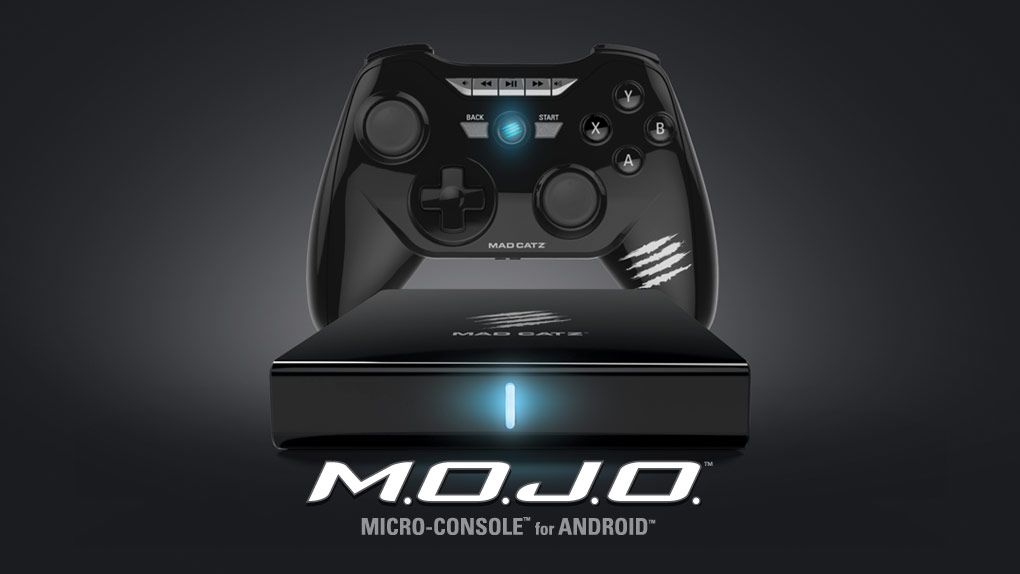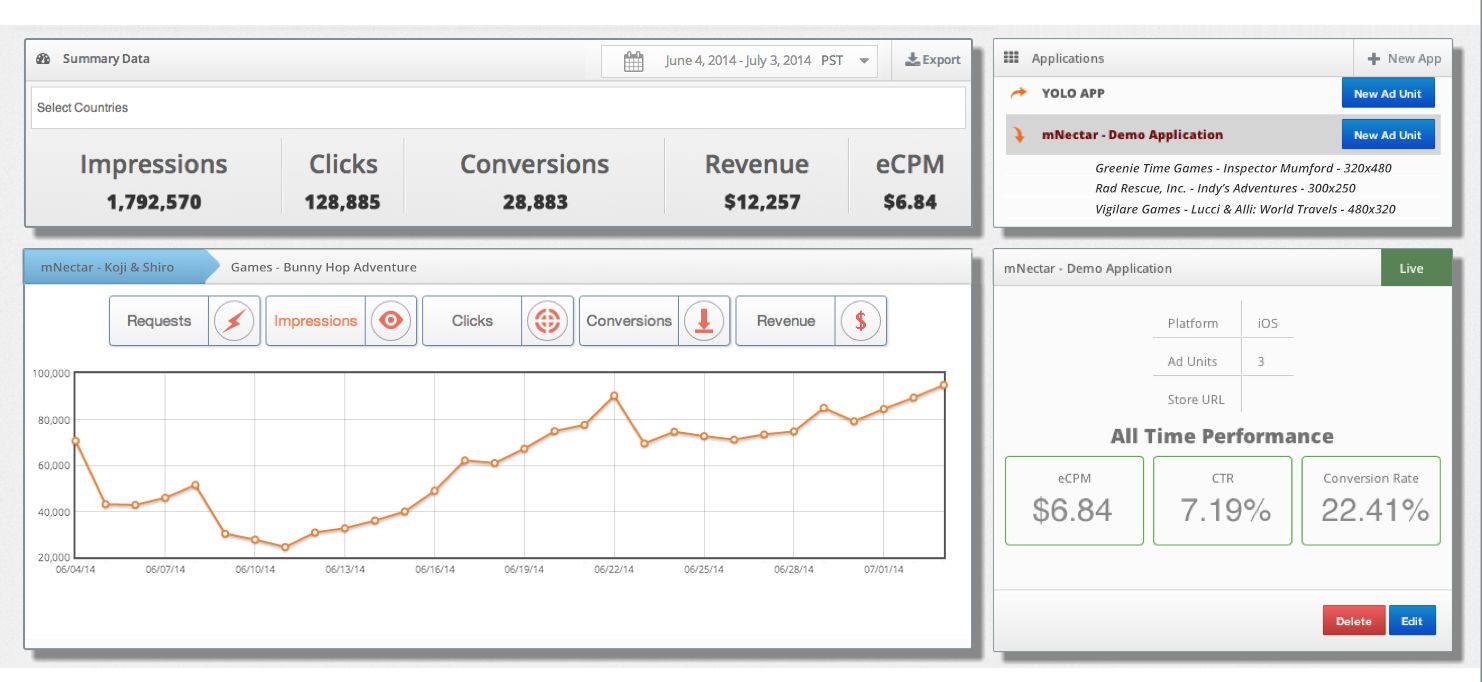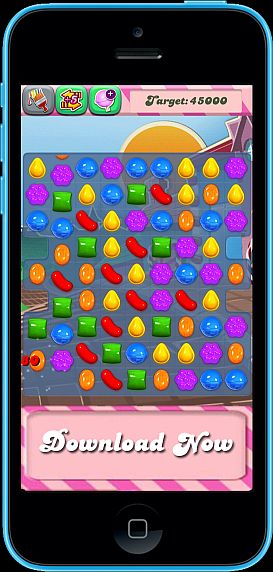With Google the latest tech giant to see the future of mobile gaming connected to the living room big screen, the age of micro-consoles has arrived. This fall Android TV will join devices like Amazon Fire TV, Nvidia Shield, OUYA and Mad Catz’ M.O.J.O. The lines are blurring between what’s a mobile game and what’s a big screen game, especially with new technology like Nvidia Tegra K1 and Epic Games’ Unreal Engine 4 upping the ante with graphics and ease of cross-platform development. Olivier Voirin, VP of Sales in Europe for hardware and accessories company Mad Catz, explains how the gaming ecosystem is evolving in this exclusive interview.
How have you seen the quality of the video games being released today on mobile evolve over the last few years?
The quality of software on mobile devices continues to evolve at a dramatic pace. A few years ago, mobile gaming was traditionally associated with simple touchscreen games designed to entertain over short periods of time. These kinds of titles were purposely kept simple as the host hardware would not be powerful enough to run core-gaming experiences and also because the games needed to be designed within the confines of a very small screen. These games continue to be popular of course, but simultaneously we have seen core gaming experiences take hold on mobile. AAA gaming companies such as EA are bringing their hardware intensive gaming engines to mobile and as the hardware matures and connected devices take hold, games are becoming as complex, involving and as good looking as their console counterparts, enabling many gamers to play with one device only, be it at home or on the move.

Olivier Voirin, Mad Catz
Can you give us a sense of how quickly, even just this year, mobile technology is evolving and what this means for game developers?
At E3 2013, Mad Catz unveiled M.O.J.O, our micro-console powered by Android. We’re extremely proud of the device and the nature of the open platform design we implemented. In the space of a year however, M.O.J.O. has evolved beyond all recognition, adding 4K compatibility, access to the OUYA gaming catalogue as well as access to cloud based gaming services such as OnLive. The world has changed drastically in the last few years, I don’t even know if the ‘mobile gaming’ terminology still fits. Today’s smartphones are really super powerful connected devices. You can experience the same level of quality gaming on the move or seamlessly connect to your living room TV at home.
Today’s connected devices adapt to the user’s needs and the Android operating system is very good at affording the user such flexibility. In terms of hardware, when we designed M.O.J.O. we were forward thinking, insisting on the most powerful chipset available to us in the form of Tegra 4 from NVIDIA. Since we launched M.O.J.O., NVIDIA have gone on to announce the new K1 processor which takes another huge leap forward in performance. The development cycle for technology bound to mobile devices is becoming much shorter and we’re seeing very noticeable leaps in performance every six to 12 months now.
It’s not just raw processing power that allows connected mobile devices to evolve, software and adjacent technologies continue to adapt adding feature rich content for gamers. Both KitKat and iOS 7 feature standardized game controller input which we feel is a huge leap forward and something we’ve been championing through our GameSmart initiative. We use the latest Bluetooth Smart (4.0) protocol in our C.T.R.L.R Mobile GamePad. The new standard drastically reduces lag and improves battery life, essential for core gaming. It’s also worth pointing out that increased network speeds through fiber optic and 4G allow gamers to connect together for deep online gaming, as well as unlocking the power of the cloud for streaming services such as OnLive.
What possibilities have tablets opened up to game developers?
I think smart devices in general have opened up so many new types of gaming experience to developers. We have seen a resurgence in indie developers flourishing with experimental software that would previously have been too costly or complex to launch on home devices. It’s also important to note that smart devices have made gamers out of much of the world’s population without necessarily trying. Emerging territories in particular now have access to exceptionally adept gaming hardware in the form of cell phones and tablets. Many of these territories never received traditional core game consoles so are discovering gaming for the first time. It’s a wonderful opportunity for developers to make a first impression on those who have never thought of themselves as a gamer before.
In terms of tablets specifically, the real estate made available from larger screen sizes has opened up gameplay opportunities. Some games which feature virtual on screen commands simply would not work well on a screen size of four inches and some games also just do not translate well to smaller screens due to the complexity of on screen action. Many developers continue to experiment with tablets, acting as a second screen for core gaming. I’m not sure anyone has quite cracked second screen desirability just yet but there are many interesting experiments going on in this fashion.
With a user base of over 1.75 billion smartphones forecast globally for this year by eMarketer, how is mobile changing the dynamic of game development?
The statistics are indeed staggering, in the last console cycle, the Xbox 360 is widely considered the leading hardware with around 80 million units sold. That number is indeed impressive but dwarfed in comparison to mobile devices sold yearly. As more developers rush to embrace mobile, we are seeing the range of experiences broaden. The fact is that everyone who owns a smart device is now targeted as a gamer. That’s a powerful opportunity in the right hands, however even though the barrier of entry is low, getting noticed in such a crowded marketplace is indeed a tough question to answer. Mobile is being taken very seriously as a platform for core gaming, a trend we believe will only grow over the next 18 months. AAA games now cost millions of dollars to create and developers will see mobile as a revenue stream they can only ignore at their peril. There will of course continue to be millions of snack sized games continue to flourish but the software range in particular will continue to mature.

What are we seeing from gamers’ behavior when it comes to playing mobile games or tablet games, even when home?
Mobile now dominates our lives and especially our leisure time. Many casual gamers have progressed from traditional core consoles and now spend most of their time on their smart devices. It’s true that not all of that time is spent gaming, but a large portion of that time is and as mobile gaming continues to mature we believe the length of time users spend gaming on their mobile devices will grow. Users are now realizing that they can easily hook up their smart device to the living room TV, sometimes even wirelessly, add a game controller to their derive and replicate a core gaming experience at home without the need to purchase a console. We believe this is an enormous shift in the behavior of gamers, which is why we are working tirelessly to cement a leadership position in hardware through our GameSmart range of mobile products.
What opportunities does the second screen gameplay experience companies like Sony and Microsoft are encouraging developers to use open up for transitioning console gamers to mobile devices?
I think the big companies are reacting very smartly to the fact that we all have second (or in many cases third) screens available to us. Again, the lines are so blurred now between mobile and home gaming that we’re seeing developers capitalize on the idea of starting gaming on one device and seamlessly continuing on another. The OnLive CloudLift service allows gamers to take PC games they have already purchased and throw those games into the cloud. As a gamer, this means that if you’ve spent 20 hours gaming on your PC, you can now pick up right where you left off on a mobile device of your choosing. Both as a gamer and a developer, this type of interconnectivity is very liberating.
How is new technology like Unreal Engine 4 opening up cross-platform game development for mobile and next gen consoles?
As a company specializing in hardware, we’re probably not best qualified to answer this, however as home and mobile devices share deeper levels of interconnectivity and the core experience is broadly identical across multiple platforms, it’s imperative that developers are able to streamline development across multiple platforms. If a title is to prove profitable, developers need to design around a common engine and then port the title simply to numerous devices. This is why the latest generation of consoles are built around a common architecture. We are now, for the first time, entering a period where mobile is powerful enough to support the next generation of gaming engines. EA is bringing Frostbite to mobile and Unreal 4 is coming also. This will make porting core game experiences to mobile dramatically easier and ensure that all gaming devices be they at home or mobile complement one another.
Where do you see devices like the Mad Catz M.O.J.O. fitting into the video game landscape today?
M.O.J.O. is a leading product in our GameSmart mobile range. Android not only offers the power and flexibility to allow for core gaming experiences, but it’s also well adept at performing the multitude of tasks traditionally covered by a home PC. Users value simplicity, power and affordability all of which is provided by M.O.J.O. With M.O.J.O., you can watch 4K content on compatible TV’s, steam from your favorite music and movie apps, surf the web, answer your emails and play the latest state of the art games from the store front of your choice. I think the days of having multiple devices which serve one or two uses are coming to an end, devices like M.O.J.O. offer mainstream consumers a highly affordable route to get all the content and services they need as well as game at a very high level.
How do you see the capability of streaming or plugging in mobile devices to HD and even 4K TVs impacting what was traditionally a console game experience?
As noted above, mobile hardware is now powerful enough to offer a truly compelling experience to rival or even eclipse that of a traditional console. M.O.J.O. is a 4K compatible device and compatible with state-of-the-art cloud gaming services such as OnLive. With a device like M.O.J.O., gamers can play the latest PC games, running at their highest hardware levels, in high definition with no perceptible lag. We believe that experiences such as these are true game changers. I don’t think traditional gaming consoles will disappear overnight but it’s undeniable that mobile gaming is impacting the industry in ways never seen before.
What do you think the next console will be in five to six years?
I’m not certain there will ever again be a traditional game console in the form of a big box of hardware that hibernates in the living room. I think that the first parties will embrace mobile and future hardware will reflect the way that gamers like to play. Games will play and look identical on the move or at home and the host hardware will be designed to reflect that.
How is Mad Catz positioning itself for this transition?
At CES 2013, Mad Catz introduced the GameSmart initiative, speaking to developers, publishers and hardware manufactures to get behind an open standard for hardware. We don’t believe gamers are happy to buy a controller for a dozen different devices. Gamers’ should be able to buy one product and use it across multiple formats and operating systems. As a company with a 20 year heritage in controllers, we believe we are well positioned to make this a reality. Bluetooth Smart (4.0) is the ideal protocol we feel for gaming. It’s open, fast, robust and great technology for gaming. Many of our wireless GameSmart products use Bluetooth Smart as a communication protocol. We see where mobile gaming is heading and plan to take a leadership position in accessories and hardware for mobile. We’re not interested in producing low quality product for simple touch gaming, we’re focused on delivering hardware at a quality which gamers associate with core gaming and which offer better build quality, better engineering and a better feel than our competitors.
What are the challenges of marketing devices like the M.O.J.O. in today’s crowded marketplace?
The sheer amount of noise surrounding gaming makes it difficult for any company to get heard. Education is key. Playing the latest PC game with our next generation Bluetooth controller on M.O.J.O. is a remarkable experience and most gamers are blown away when they experience this for themselves. Seeing footage stream from M.O.J.O. in 4K resolution is incredible. Gamers need an opportunity to see and play it for themselves. It’s an ongoing challenge but by working with companies such as Nvdia, OUYA and OnLive, we are confident we can differentiate ourselves from the competition.
 Wally Nguyen, mNectar CEO
Wally Nguyen, mNectar CEO
 mNectar control dashboard
mNectar control dashboard
 Sample mNectar trial
Sample mNectar trial
 Olivier Voirin, Mad Catz
Olivier Voirin, Mad Catz

